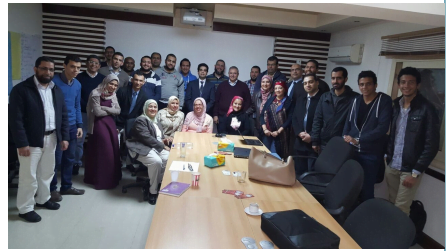The Language of Lean
One of the frequent criticisms that Lean Practitioners face in teaching Lean Thinking and its Leadership is that the language used can be confusing or exclusive. Whilst terms such as Kaizen and Kanban might have become well established across industry and geography, terms such as Kamishibai, Kaikaku and Yamazumi (please see the end of the article for a glossary of Lean terms) are less well known and can be received negatively by the very people for whom acceptance is critical if the Lean transformation is to be a success.
A common response to this is to remove the Lean language, the ‘Japanese’, and instead replace it with the native language of the organisation or location. However, I would like to challenge this, as in my experience the root cause of the issue is not the language per se but the way in which it is introduced and taught.
In the 2002 “Notes of the Role of Leadership and Language in Regenerating Organisations”, based on conversations between Dr. Paul Pangaro and Dr. Michael Geoghegan, the importance of a change of language to the transformation of, and innovation within, an organisation was discussed. This new language helps to stimulate the thinking of people and reinforce the change that is happening, challenging the existing paradigms and breaking the status quo.
However, this is not only relevant in a business context, as many aspects of our life have their own language, which even if considered part of the wider native language, are not generally part of the active vocabulary. Think about learning a new sport, for example Golf. As you learn the game you will be taught a new lexicon, including terms such as birdie, bogey, bunker, chip, dog leg and many others. This language will facilitate the communication between you, your instructor, fellow players, and allow you to learn about what each of the elements means for the playing of the game and to read and understand about best practices.
This is equally relevant when teaching the practice of Lean, as many of the tools, techniques and methodologies of Lean require a vocabulary that helps to describe and explain what makes them different from the traditional approaches. Utilising this new language, the teacher can explain the concepts, coach the trainee, and help them in making the transition to the new way of thinking and acting.
For example consider Kamishibai, a form of layered audit that ensures that the leadership at all levels of the organisation are interacting in an effective manner with their people and their standardised work. It helps to maintain discipline but also encourages coaching and Kaizen (improvements to standard). Whilst the term ‘Layered Audit’ (or the local translation) could be used to ensure that there was no vocabulary barrier, the risk is much greater that there might be an understanding barrier, whereby people make assumptions about what a layered audit is. By teaching to the new term of Kamishibai, the trainer can aim to remove bias from the equation.
The language of Lean is a vocabulary with meaning, derived from many years of success within Toyota (TPS) and a high level of adoption across Japanese companies. However, the teaching of the Lean concepts must be done properly and with a clear explanation of the Why, How and What; using the new language as a way of changing mind-set and taking the organisation on its Lean transformation.
By using a common vocabulary across geography, culture and native language, the organisation can share, communicate, learn and grow, without the reinvention or translation of Lean principles.
I therefore recommend that you avoid the waste of ‘over-processing’, translating the Lean language and, instead, embrace it and its concepts and begin the transformation into one that is Lean Thinking and led by Lean Leaders.
Glossary of Lean Terms
| WORD OR PHRASE | PRONUNCIATION (non-standard, Ad Hoc approach) | DEFINITION |
| ANDON | And On | A visual signal. Typically, a light mounted on a machine or line to indicate a potential problem or work stoppage. |
| CHAKU CHAKU | Chacku Chacku | Meaning load-load in Japanese, this describes a work cell where machines off-load parts automatically so that operators can take a piece directly from one machine to the next without waiting |
| GEMBA | Gem Ba | Gemba is a Japanese word meaning “actual place,” or the place where you work to create value. In manufacturing this is the factory. In each industry, the Gemba will be a different place. |
| GENCHI GENBUTSU | Gen chee Gen Boo Tsoo | Japanese for “actual place, actual thing” indicating the habit to “go see” to gain the facts and solve problems based on facts. (“Gen” as in “go” not “general”) |
| HEIJUNKA | Hay June Kah | Production smoothing; creating a build sequence that is determined by SKU average demand. |
| HOSHIN KANRI | Hoe Shin Kan Ree | A method of policy deployment and strategic decision making that focuses and aligns the organization on a few vital “breakthrough” improvements. The objectives and means to achieve the objectives are cascaded down through the entire organization using a series of linked matrices. The process is self-correcting and encourages organizational learning and continuous improvement of the planning process itself. |
| JIDOKA | Jid Oak a | Japanese term for transferring human intelligence to a machine through automatic stopping upon detection of errors. |
| KAIKAKU | Ky Kak Koo | Radical improvements or reform that affect the future value stream. Often these are changes in business practices of business systems. The Kaikaku Experience is a tour of world class companies that have already been through a radical improvement program and have implemented Lean Operating Systems. The experience is designed to offer support, encouragement and inspiration to the businesses about to deploy Lean Thinking |
| KAIZEN | Kai Zen | A combination of two Japanese words Kai (change) and Zen (good). A Kaizen follows a PDCA cycle of Exposing a Problem, determining the root cause, implementing a solution, standardising and confirming success. |
| KAMISHIBAI | Cam E She Buy | The Kamishibai board is a visual management tool for use by Senior Management Team Members to confirm that Standard Work is being undertaken by Staff and to maintain Standard Work Discipline. In the same way that Supervisors and Line Managers use an hourly production status board to confirm that the Production Targets are being met, Kamishibai boards are used for weekly, monthly and even quarterly audits of Standard Work elements. |
| KANBAN | Kahn Bahn | A Japanese word for ‘sign’, Kanban are typically a re-order card or other method of triggering the pull system based on actual usage of material. Kanban are attached to the actual product, at the point of use. Kanban are cards that have information about the parts (name, part number, quantity, source, destination, etc.) but carts, boxes, and electronic signals are also used. Squares painted on the floor to indicate storage or incoming areas are frequently, but mistakenly, referred to as Kanban. |
| MIZUSUMASHI | Mizzu Su Mashi | Fixed Course Pick-up, Water Spider (ongoing line-side material delivery and empty container and Kanban pick-up) |
| MUDA | Moo Da | Meaning waste. Any activity that adds cost without adding value to the product. |
| MURA | Moo Ra | Workload that is not balanced and variations in process quality, cost and delivery |
| MURI | Moo Ri | Workload that creates burden for the team members or processes. Exertion, overworking (a person or machine), unreasonableness. The strain put on processes due to muri often results in various wastes. |
| POKA YOKE | Poke A Yo Kay | Japanese for ‘mistake-proofing’. Mistake-proofing and fool-proofing devices made by designing parts, processes, or procedures so that mistakes physically or procedurally cannot happen. |
| SENSEI | Sen Say | Teacher or master. In Lean circles typically referring to an individual who led numerous Lean transformations and is at the pinnacle of Lean Knowledge and experience. |
| TAKT | Takt | The word TAKT is German but is widely used in Japan and is the customer demand stated in units of time. |
| YAMAZUMI | Yamma Zoo Mi | A Yamazumi chart is a stacked bar chart that shows the balance of workloads between a number of operators typically in an assembly line or work cell against the TAKT time. Each bar is made up by a number of smaller work elements. |
| YOKOTEN | Yoko Ten | Horizontal deployment, copying and expanding good kaizen ideas to other areas. |
About the author
Philip is currently Senior Vice President, Global Transformation at GKN Aerospace, the world’s leading multi-technology tier 1 aerospace supplier.
Philip has over 30 years of business experience in leadership roles spanning the customer value chain, in Industry Leading Companies such as GKN Aerospace, Philips, Gillette, and Travelport.
He is the author of two books: Leading with Lean: An Experience-based guide to Leading a Lean Transformation, available on Amazon and The Simplicity of Lean: Defeating Complexity; Delivering Excellence, publishing on the 1st November and available for pre-order on Amazon. Connect with him on LinkedIn.









